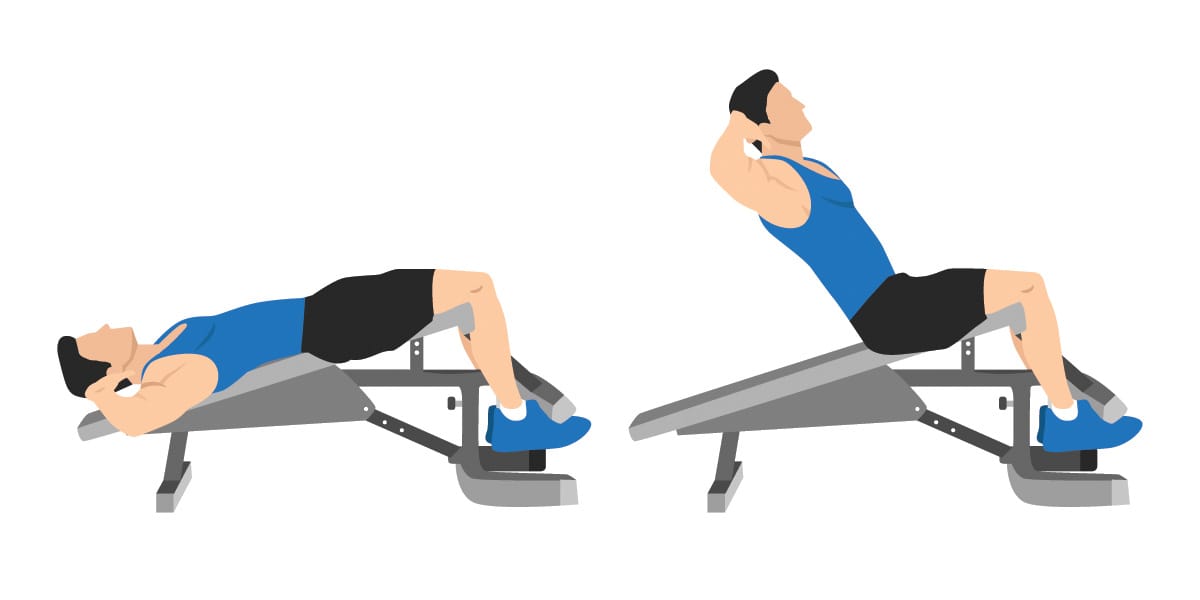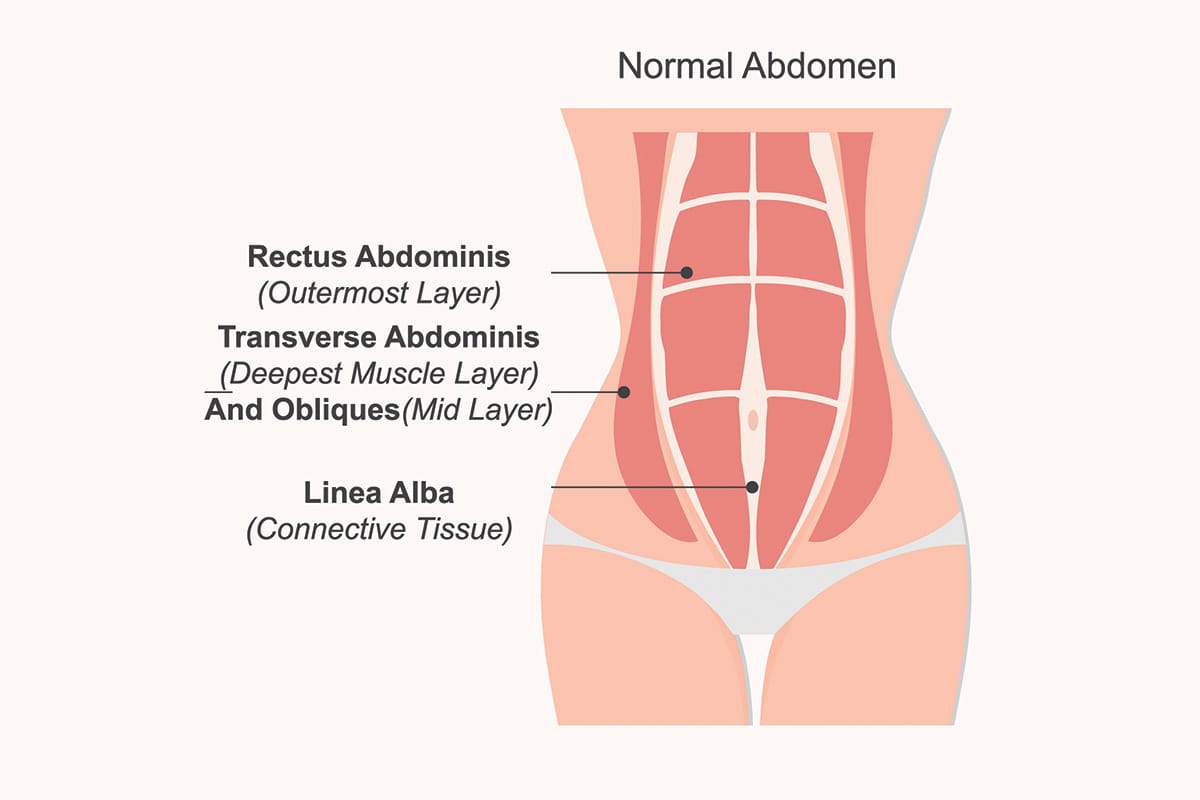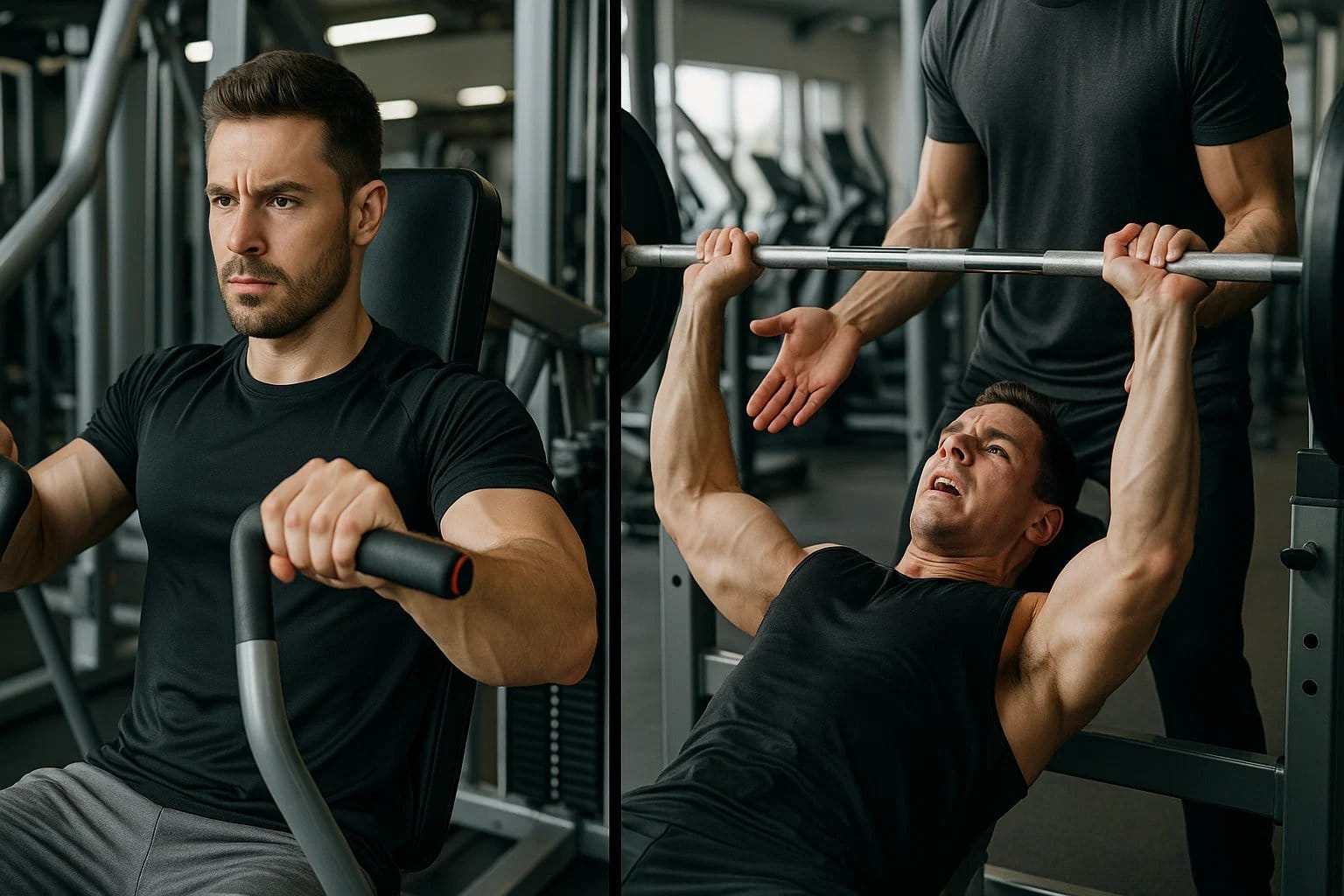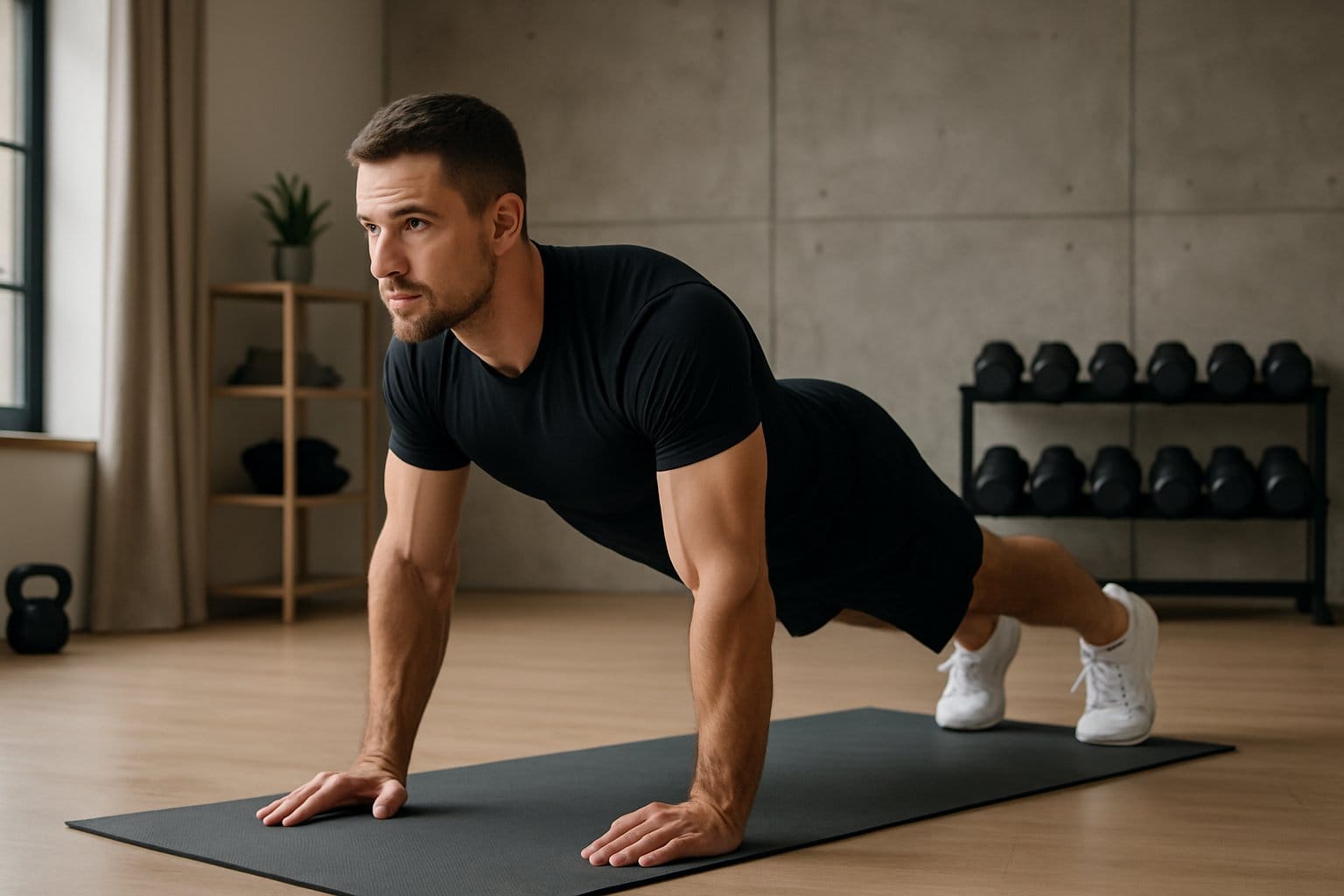Decline Crunch Exercise: Spice Up Your Ab Workout
Step up your ab game and take a look into an exercise that offers several benefits for those looking to strengthen their core.
Are you looking to know everything about the decline crunch exercise? This is a simple yet effective way to add variety and intensity to your core training routine. By performing crunches on a decline bench, you increase the challenge on your upper abs, making it a great option for those looking to strengthen and tone their midsection.
If you want to step up your ab game, having a dream six pack has to be a part of your greek god workout. The decline crunch offers a straightforward way to engage your core muscles and mix up your workouts.
Let’s explore everything you need to know: its benefits, step-by-step instructions, common mistakes, variations, and tips for programming it effectively into your workout.
Ready?
What Is The Decline Crunch Exercise?
This exercise is a variation of the traditional crunch performed on a decline bench. The decline mode uses gravity resistance and shifts the workload to your upper abs. This added intensity means your core has to work harder, delivering more significant results and making it burn!.
The decline crunch ramps up the challenge, making it a perfect option for anyone serious about core training.

What Muscles Does Decline Crunch Exercise Work?
First, let's see what's inside the abs.
Your abs are more than just a six-pack waiting to happen. They’re a complex group of muscles that work together to stabilize your body and support movement.
The good news is that Decline Crunch effectively work multiple muscle groups, making it a great compound exercise for strengthening the core and improving overall abdominal strength and stability. Here are the muscles that are engaged in this exercise:
- Rectus Abdominis: is the front-and-center showstopper, often referred to as the "six-pack" muscle, responsible for flexing the spine.
- Obliques (Internal and External): it is crucial for twisting and bending motions, like when you reach for something on a high shelf.
- Transverse Abdominis: Deep beneath lies the transverse abdominis, the unsung hero of core stability, acting like a natural corset to protect your spine and keep everything in place.

Together, these muscles form a key area that not only makes you look good but also keeps you moving strong and steady in all your daily activities.
Benefits Of The Decline Crunch Exercise
We all know that spot reduction is a myth, but the decline crunch exercise stands out as a focused and effective way to elevate your core training, providing a unique challenge that engages your abs more intensely than traditional crunches.
Whether your goal is to build a stronger core, improve your overall fitness, or add variety to your routine, the decline crunch provides benefits that make it a worthwhile addition.
Let’s break down the key advantages of this powerful exercise:
1. Increased resistance for more effective training
The decline angle adds extra resistance to your movements, making your abs work harder to lift your upper body. This increased challenge translates to greater strength gains and muscle development over time.
2. Enhanced core engagement
The decline crunch specifically targets the rectus abdominis, also known as the six-pack muscles. The angle of the bench ensures that your abs remain under tension throughout the entire movement, maximizing activation and efficiency. This constant engagement of the core helps it become stronger and more defined, which benefits not only aesthetics but also functional strength.
3. Customizable intensity
One of the biggest advantages of the decline crunch is its versatility. You can adjust the difficulty by changing the bench’s angle or incorporating weights into the exercise. This adaptability makes it suitable for all fitness levels, from beginners looking to build foundational core strength to advanced athletes seeking an extra challenge.
4. Improved posture and balance
A strong core plays a crucial role in maintaining good posture and overall stability, as research shows. By strengthening your rectus abdominis with decline crunches, you support your spine and reduce the risk of slouching or lower back strain. Over time, this improved stability can enhance your performance in other exercises and everyday activities.
5. Functional strength for daily activities
Your core is a powerhouse that supports almost every movement you make. Decline crunches build the kind of functional strength that translates to improved performance in sports, better balance, and easier execution of everyday tasks like bending, lifting, and carrying.
How To Perform The Decline Crunch Exercise
Mastering the right form not only makes this move more effective but also keeps your workout safe and satisfying.
Ready to feel the burn and take your core to the next level?
Here’s how to do it step by step:
Setup:
- Adjust the decline bench in an angle that challenges you without compromising form. (30 to 45 degrees)
- Secure your feet under the foot pads to keep your lower body stable.
- Lie back on the bench with your hands either across your chest or behind your head.
The decline crunch exercise movement
- Engage your core and lift your upper body toward your knees in a controlled motion.
- Exhale as you crunch up, keeping your neck neutral and avoiding any pulling with your hands.
- Slowly lower yourself back to the starting position, inhaling as you go.
- Repeat for the desired number of reps.
Common Mistakes To Avoid
Even seasoned gym-goers can make errors during the decline crunch exercise. To avoid turning a good thing into a discomfort, focus on proper form and avoid these pitfalls:
- Pulling on your neck: Placing your hands behind your head is fine, but avoid yanking your neck upward. Let your abs do the work.
- Rushing through reps: Speeding through the exercise reduces effectiveness. Focus on slow, controlled movements for maximum engagement.
- Overarching your back: Maintain proper alignment throughout the movement to protect your spine.
- Skipping progression: Start with a manageable angle and increase the decline or add weights as your core strengthens.
Decline Crunch Variations
Keep your core workouts engaging and challenging by exploring these variations of the decline crunch exercise.
- Adding a weight plate or dumbbell across your chest turns the standard decline crunch into a weighted variation, increasing resistance and intensifying the burn.
- You can also try the twisting decline crunch, where you rotate at the top of each crunch to activate your obliques and work those side muscles.
- Another exciting option is the medicine ball Russian twist, which can be done solo or with a partner, adding an element of coordination as you pass the ball while crunching.
- Finally, the reverse decline crunch shifts the focus to your lower abs by raising your legs instead of your upper body, offering a fresh way to target your core.
These variations not only keep your routine interesting but also ensure comprehensive core engagement.

How To Do The Decline Crunch Exercise Without A Bench
Don’t have access to a decline bench? No problem! You can still perform a variation of the decline crunch using household items or by modifying your position.
Whether you’re at home or on the go, these options keep your ab training on track.
Here’s how:
1. Inclined surface alternative:
Perform the crunch as you would on a decline bench, ensuring your core stays engaged and your movements are controlled.
Secure your feet under something sturdy, like a piece of furniture or a weighted object, to maintain stability.
Find a sturdy surface that creates a slight decline, like a stable stack of yoga mats or a sloped surface (even a low hill works outdoors).
2. Elevated legs on the floor:
Place your hands behind your head or across your chest, and crunch upward, squeezing your abs at the top of the movement.
The incline created by your legs mimics the decline angle, shifting the focus to your upper abs.
Lie on the floor with your legs elevated on a sturdy surface, such as a chair or a low table.
3. Resistance band decline crunch:
The resistance mimics the challenge of gravity in the decline crunch.
Lie on the floor and hold the band handles above your shoulders, creating tension as you crunch up.
Anchor a resistance band low to the ground.
How To Incorporate Into Your Workout Routine
Not sure how to fit the decline crunch into your existing plan? You can pair it with side plank crunch, leg raises, or Russian twists for a balanced ab blast.

Here are some programming examples:
- Beginner: 3 sets of 10-12 reps, 2 times per week.
- Intermediate: 3-4 sets of 12-15 reps, 3 times per week.
- Advanced: 4 sets of 15-20 reps with added weight, 3-4 times per week.
FAQ
Q: Is the decline crunch exercise suitable for beginners?
A: Yes! Start with a mild decline angle and focus on proper form before progressing.
Q: How long does it take to see results?
A: Consistent training, combined with a healthy diet, can yield visible improvements in a few weeks.
Q: Can the decline crunch help with back pain?
A: While it strengthens the core, it’s important to consult a healthcare professional if you have back issues.
Q: What’s the best angle for a decline bench exercise for beginners?
A: Start with a gentle angle (around 15-20 degrees) and increase it as you build strength.
Q: Why Decline Crunches Are Worth The Burn?
Let’s face it, crunches can feel like a chore, but the decline version makes them anything but boring.
It’s like regular crunches got a glow-up, more challenging, more rewarding, and yes, a little more painful (no pain, no gain).
With every rep, you’ll feel the burn in all the right places, reminding you why you started your fitness journey in the first place.
Think of it as a tough-love workout for your abs! brutal!
Conclusion
The decline crunch exercise is an incredible move that combines strength, stability, and sculpting into one efficient package.
By adding this dynamic exercise to your routine, you’ll not only build a stronger core but also improve your posture, balance, and overall fitness.
With proper form, gradual progression, and a dash of determination, the decline crunch can help you take your ab training to new heights.
So adjust that bench, crunch with confidence, and get ready to see results that are well worth the effort!
Download the Flex fitness app and keep up with everything about workouts!
Related articles


Get fit with Flex
Build muscle & lose weight fast for free.
Available on iPhone + Apple Watch





